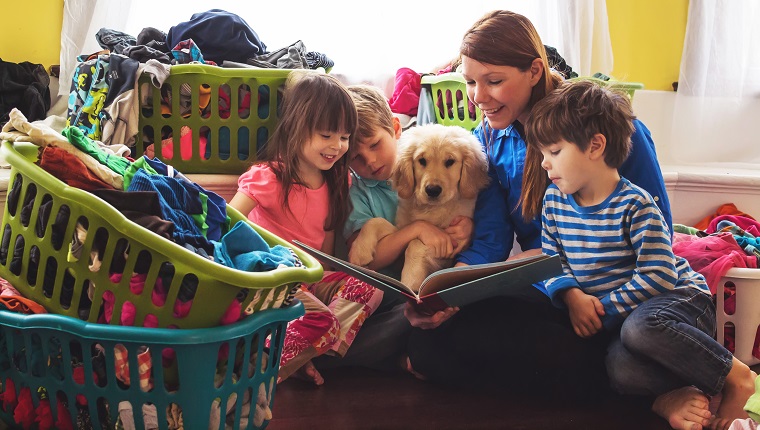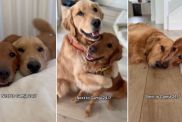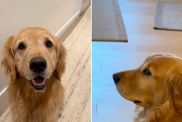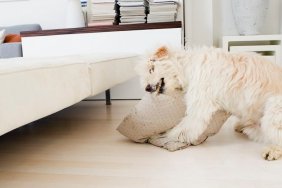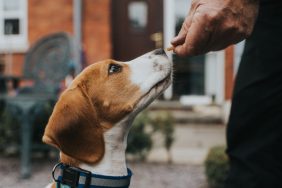Things Every New Puppy Parent Must Have
-
Crate
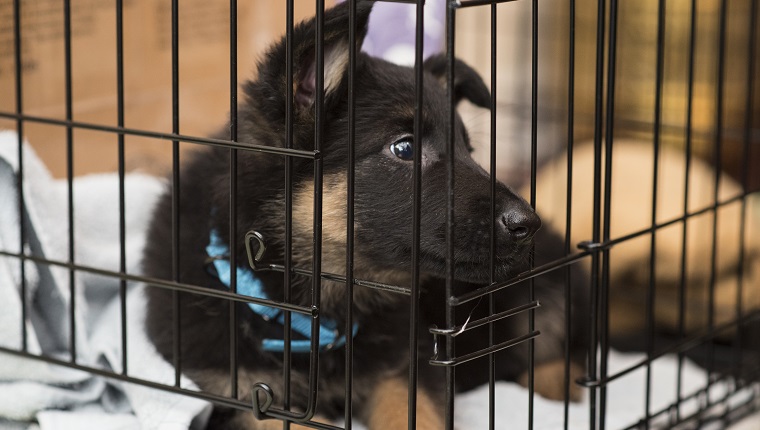
(Picture Credit: Sharon_Mendonca/Getty Images)
The idea of a crate scares a lot of people, but don’t let its looks frighten you. The crate is used to help potty train your puppy, and with some training, it can become a personal space for your dog to relax and feel comfortable.
It's also a great place to put your dog when you can't watch them to keep them out of harm's way. A great example of this is when you’re cooking dinner and you are unable to keep an eye on the pup. You can place your puppy in the crate with their favorite chew to keep them busy instead of roaming the house unsupervised.
Roaming the house alone could lead to potty accidents, inappropriate chewing, unwanted behaviors, or dangerous situations. A great crate will be safe, sturdy, and easily folded up and put away when company comes over, and it can travel with you when you need to bring your puppy along.
This Folding Metal Dog Crate
available in any size for any dog is a good choice.
-
Bed

(Photo Credit: Shutterstock)
During the house training process, you'll want to purchase a dog bed that will fit into your puppy’s crate.
The puppy can lay on the bed while in the crate for naps and when sleeping during the night. The bed will make the crate a cozier place to help your dog feel more secure.
If you want your dog to be super comfortable, consider one of these Orthopedic Memory Foam Dog Beds
.
-
Food Bowl
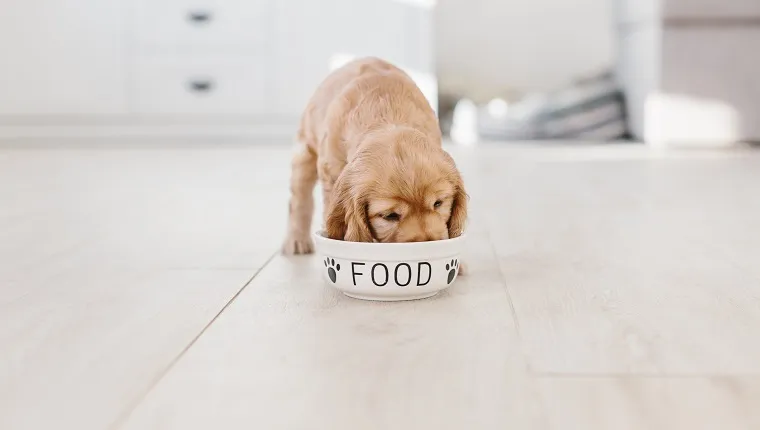
(Picture Credit: Switlana Symonenko/Getty Images)
Your puppy will have a hungry appetite while they’re growing, so it’s important your dog has a familiar food bowl to use every day for their meals.
Some plastic bowls are easily mistaken as toys, and puppies are prone to playfully knock them over or chew on them.
I suggest purchasing a dishwasher-safe ceramic bowl
for your dog. I found my ceramic bowls in the kitchen aisle at my local department store for a lot cheaper than the pet store’s ceramic dog bowls.
-
High Quality Puppy Food
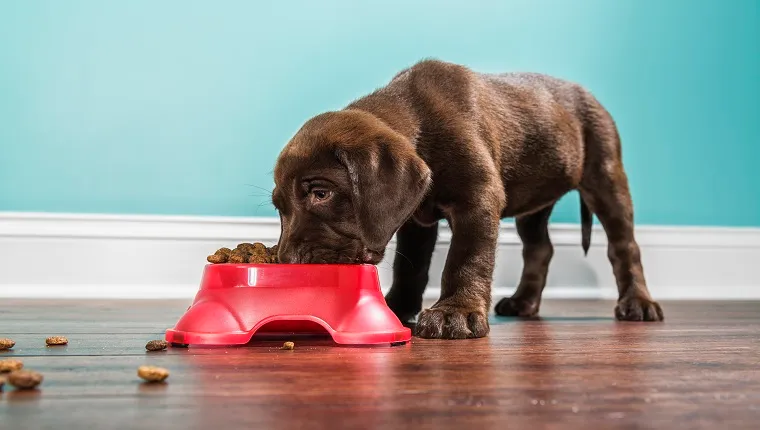
(Picture Credit: cmannphoto/Getty Images)
It’s important to feed your puppy food
labeled specifically for a puppy because it’s designed with the nutritional needs for a growing dog. Ask your veterinarian how long you should feed your new dog puppy food.
Typically your puppy should be fed puppy food until they are six months to a year old. Talk to your local pet store associate or vet staff for food recommendations.
It’s important to find a puppy food with the proper blend of proteins, vitamins, and minerals to support a healthy growing dog.
-
Water Bowl

(Picture Credit: AVAVA/Getty Images)
I suggest purchasing a dish-washer safe ceramic bowl
for your dog to drink water from.
Just like with the food dish, you don't want puppy to confuse meal times with playtimes. Plastic bowls may seem like toys.
You should always make fresh water available for your dog and wash the water bowl frequently.
-
Leash

(Photo Credit: Shutterstock)
The dog leash
, or sometimes called a lead, connects you to your dog. It’s your dog’s safety line back to you that keeps them out of harm's way.
Even if your family has a fenced-in yard, a leash is a must-have item for many reasons. A leash helps during potty training to guide your puppy away from distractions during potty breaks.
Your dog will need to be leash trained when they need to be taken to see a vet. It’s also important to have a leash for walks around the neighborhood.
You may have a yard, but walks keep your dog entertained and stimulated and are an important part of the human-puppy bonding and training experience.
-
Identification Tags
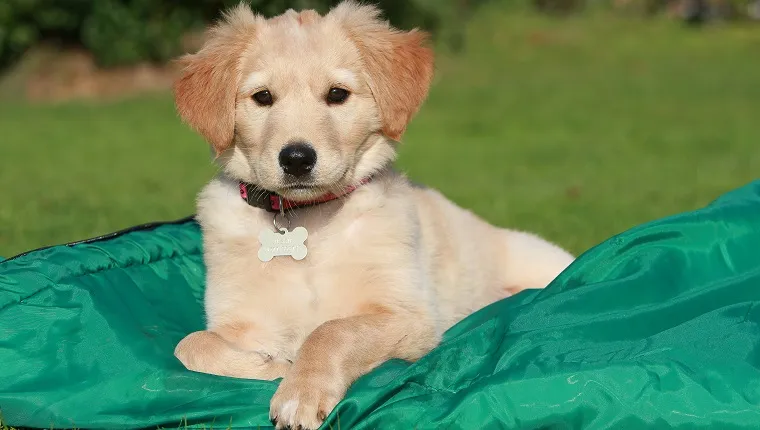
(Picture Credit: Nick Ridley/Getty Images)
A personalized pet ID tag
is a must-have item because, if your dog were to ever go missing, anyone who finds them could bring your dog back home thanks to the information engraved on the tag.
Think of your dog’s identification tags as their ticket home when they're lost. Your dog can't communicate where they live, who their humans are, or what their phone numbers are. Include your dog's name and your phone number on the tag so someone who finds your dog knows how to contact you.
Other optional information to include on an identification tag would be your address, additional phone numbers, and your name or social media handle.
I recommend placing the identification tags on your dog’s collar that they wear every day.
-
Collar
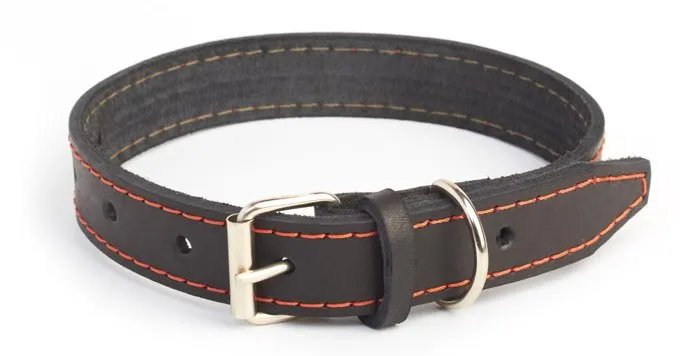
(Photo Credit: Shutterstock)
I recommend a leather dog collar with buckle
for your dog to keep their identification tags on them at all times.
This goes with the ID tags above, so if your dog were to ever go missing, they'd have a way back home thanks to the information engraved on the tags.
The collar must be sturdy, and a metal buckle is hard to break. Too many dogs have been lost or injured with those nylon collars and plastic buckle clips. They just aren't as reliable.
-
Harness
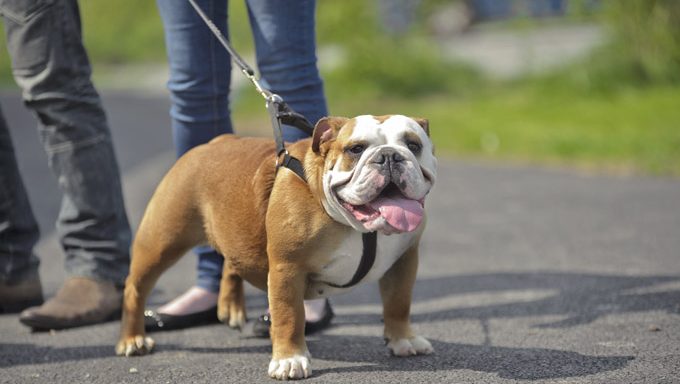
(Photo Credit: Shutterstock)
During walks on a leash, it’s important to use a harness instead of a neck collar
for most dogs. Neck collars can put a lot of painful strain on the neck’s muscles and trachea.
There are many different options for harnesses, such as a body harness, chest harness, or face harness. I suggest body or chest harnesses for smaller to medium dog breeds and face harnesses for large breeds.
These different harness types are available in all dog sizes. A harness helps give an even amount of pressure along the device, and some harnesses can help with pulling issues.
-
Poop Bags
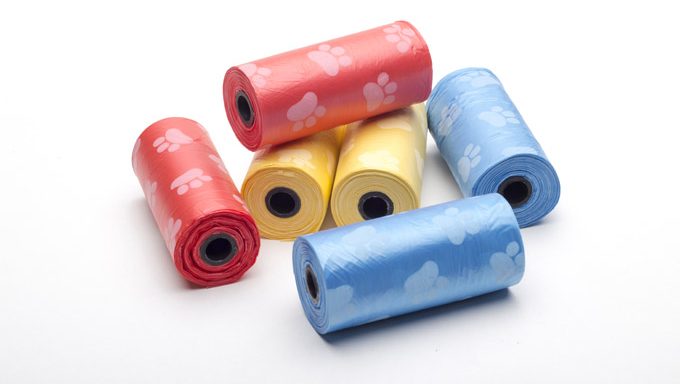
(Photo Credit: Shutterstock)
During walks with your dog, it’s important that you pick up all feces with dog poop bags
so that you can keep the environment clean.
Puppy and adult dog stool can sometimes carry intestinal parasites or disease, so it’s important to clean up the poop so that another person’s dog doesn't get infected.
-
Chews
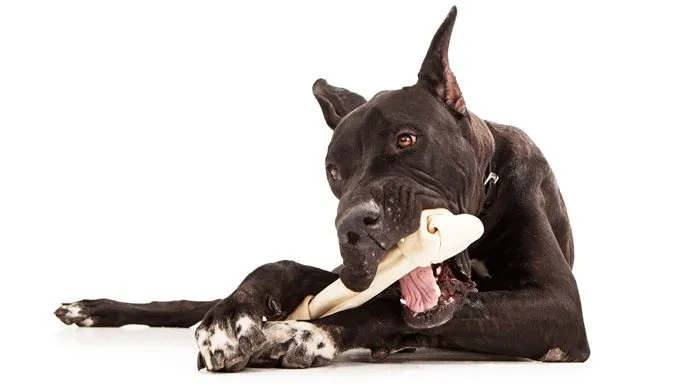
(Photo Credit: Shutterstock)
Dogs have natural urges to chew throughout their entire lives. Chewing gives your dog a job to do, and it keeps him busy.
There are many different types of chews you can buy for your dog. Some people mistake toys as being chews, but they are two different items. Real chews include bones, bully sticks, and hooves.
Some dogs, however, suffer from GI upset when using these products. If your dog gets an upset stomach, look for alternative chews made from rubber, antler bone, yam, cheese, sweet potato, nylon, or corn starch.
You should also ask your vet which types of chews are appropriate for your puppy's particular stage of development.
-
Toys

(Photo Credit: Shutterstock)
Dogs need activities to keep them entertained and their minds stimulated.
There are many different types of dog toys
you can purchase for your puppy. Balls to play fetch, tug-of-war toys, plush toys with squeakers, and puzzle toys are all great items to keep your pup active.
-
Training Clicker
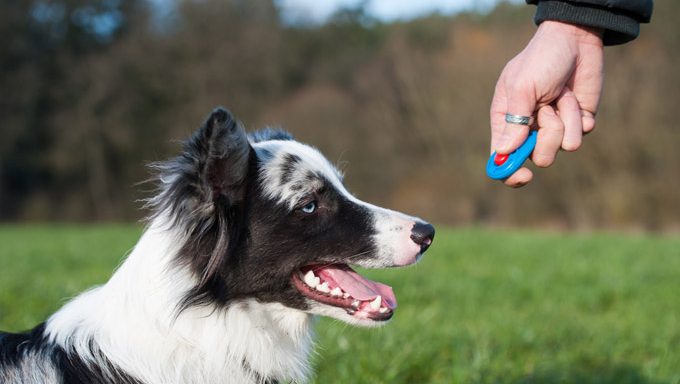
(Photo Credit: Shutterstock)
Clicker training is a method of dog training that uses a click noise to tell your dog that they're doing what you want them to do at the exact moment you make the noise.
You can associate a reward with the click noise your dog training clicker
makes so your puppy starts to understand that the click is a good thing. Clicker training is a form of positive reinforcement and can be used to teach your dog all types of commands.
I recommend scheduling your new dog for puppy obedience classes with a dog trainer to instruct you on how to properly train your dog.
-
Treats

(Photo Credit: Shutterstock)
Treats are very important to have with your new dog to use in positive reinforcement dog training. I recommend purchasing a small soft chew dog training treats
.
Always use small pieces of a treat in training so you don't overfeed your puppy. Your dog will have specific flavors they enjoy more, and preference will vary depending on your puppy’s unique personality.
-
Car Safety Harness
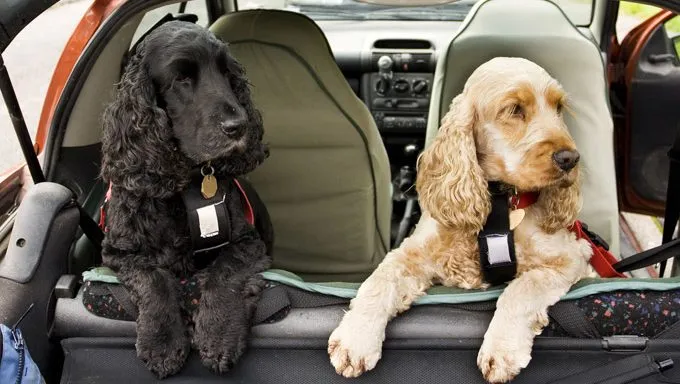
(Photo Credit: Shutterstock)
Last but not least, purchase a safety harness or car restraint for your dog while in the car
. Car safety is very important for your canine companion in case you get into a car accident.
When your dog is a puppy, they have the tendency to move around the car. Sometimes when dogs are scared, they go underneath the car seats, which could be very dangerous while you’re driving.
Having a car safety harness will ensure that your dog is secure and in one place. There are booster seats available for smaller dogs and safety harnesses available for larger dog breeds.
